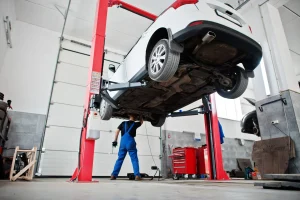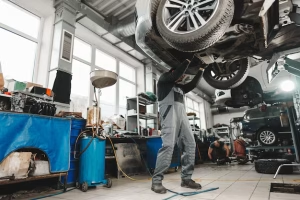Car repairs can often seem like a daunting task, especially for those who have never tried DIY fixes before. However, many common car issues are relatively easy to address, and with the right tools and a bit of guidance, you can tackle these problems yourself. By taking a hands-on approach to car repair, you not only save money but also gain a greater understanding of how your vehicle operates. Here are some easy DIY car repair tasks that anyone can do, even without advanced mechanical knowledge.
Changing the Oil
One of the most basic and essential car maintenance tasks is changing the oil. Regular oil changes help keep your engine running smoothly by preventing overheating and reducing wear. To change the oil, you will need a jack and jack stands, an oil filter wrench, a drain pan, and the correct type of oil for your vehicle. Start by lifting the car, draining the old oil into the pan, removing the old oil filter, and replacing it with a new one. Then, refill the engine with fresh oil. This process is straightforward and can save you both time and money compared to going to a mechanic.
Replacing the Air Filter
Another simple fix is replacing the air filter. The air filter ensures that your engine receives clean air for optimal performance. Over time, it can become clogged with dirt and debris, leading to reduced engine efficiency and lower fuel economy. Replacing the air filter is a quick and inexpensive job that can typically be done in just a few minutes. Locate the air filter compartment, remove the old filter, and replace it with a new one. Be sure to check the air filter regularly and replace it as needed to maintain engine performance.
Replacing Wiper Blades
Worn-out wiper blades can significantly affect visibility during rainy or snowy weather. Fortunately, replacing wiper blades is an easy DIY fix that requires minimal effort. Most wiper blades simply slide off their arm and can be replaced by snapping on a new pair. Check the size of the wiper blades for your vehicle, purchase the appropriate replacement, and follow the instructions for installation. This is a quick fix that can greatly improve driving safety, especially in inclement weather.
Changing a Flat Tire
One of the most important DIY car repair skills is knowing how to change a flat tire. A flat tire can happen at any time, but it doesn’t have to cause panic. To change a flat tire, you will need a spare tire, a jack, and a lug wrench. Begin by loosening the lug nuts on the flat tire, then use the jack to lift the car off the ground. Once the car is elevated, remove the lug nuts and take off the flat tire. Install the spare tire and tighten the lug nuts in a criss-cross pattern. Lower the car, ensuring the tire is securely attached before driving.
Replacing Headlights or Taillights
Burned-out headlights or taillights can be a safety hazard, but fortunately, replacing them is often a simple job. In many cases, you don’t need any tools to replace the bulbs. Pop the hood or open the trunk to access the bulb housing, remove the old bulb, and insert a new one. Be sure to check your vehicle’s manual for specific instructions on how to access and replace the bulbs. This is a quick fix that ensures your car is visible to other drivers, especially at night.
Replacing the Cabin Air Filter
The cabin air filter ensures that the air you breathe inside your car is clean and free from dust, pollen, and other allergens. Over time, the filter can become clogged, leading to reduced airflow and musty odors inside the cabin. Replacing the cabin air filter is an easy task that typically involves opening the glove compartment, removing the old filter, and inserting a new one. Regularly changing the cabin air filter can improve the air quality inside your car and help your HVAC system run more efficiently.
Checking and Maintaining Tire Pressure
Proper tire pressure is essential for the safety, efficiency, and longevity of your tires. Underinflated tires can lead to poor handling, increased fuel consumption, and premature tire wear. Fortunately, checking and maintaining tire pressure is simple and requires only a tire pressure gauge. Simply remove the valve cap from each tire, press the gauge onto the valve stem, and check the reading. If the pressure is low, inflate the tire to the recommended level. It’s a good habit to check tire pressure regularly, especially before long trips.
Replacing the Battery
If your car is having trouble starting, the battery could be the issue. Replacing a car battery is a relatively simple process that can be done at home with the right tools. You’ll need a wrench to remove the battery terminals, a new battery, and gloves for safety. Start by disconnecting the negative terminal, followed by the positive terminal. Remove the old battery and install the new one, reconnecting the terminals in reverse order. Make sure the battery is securely in place before starting your car.
Cleaning the Fuel Injectors
Dirty fuel injectors can reduce engine performance and cause rough idling or misfires. Cleaning fuel injectors is an easy fix that can improve engine efficiency and restore power. You can clean the injectors using a fuel injector cleaning kit, which is available at most auto parts stores. Simply follow the instructions on the kit to clean the injectors without removing them from the engine. This process helps restore proper fuel flow and ensures your engine runs smoothly.
Fixing Minor Dents or Scratches
Minor dents and scratches can be frustrating, but they are often easy to fix with a little patience. For small dents, you can use a hairdryer to heat the area, followed by applying dry ice or using a plunger to pop the dent back out. For scratches, you can use touch-up paint to blend the damaged area with the surrounding surface. Both tasks are relatively inexpensive and can greatly improve the appearance of your car without needing professional help.
Conclusion
Many car repairs that might seem complicated at first are actually simple and inexpensive tasks that can be done at home. From changing the oil to replacing wiper blades or fixing a flat tire, these easy DIY repairs can help keep your car in top condition without breaking the bank. By equipping yourself with a basic toolkit and learning a few essential skills, you can take control of your vehicle’s maintenance and avoid expensive trips to the mechanic. With a little practice, you’ll gain the confidence to handle even more complex repairs in the future, making DIY car repair a valuable and rewarding endeavor.



